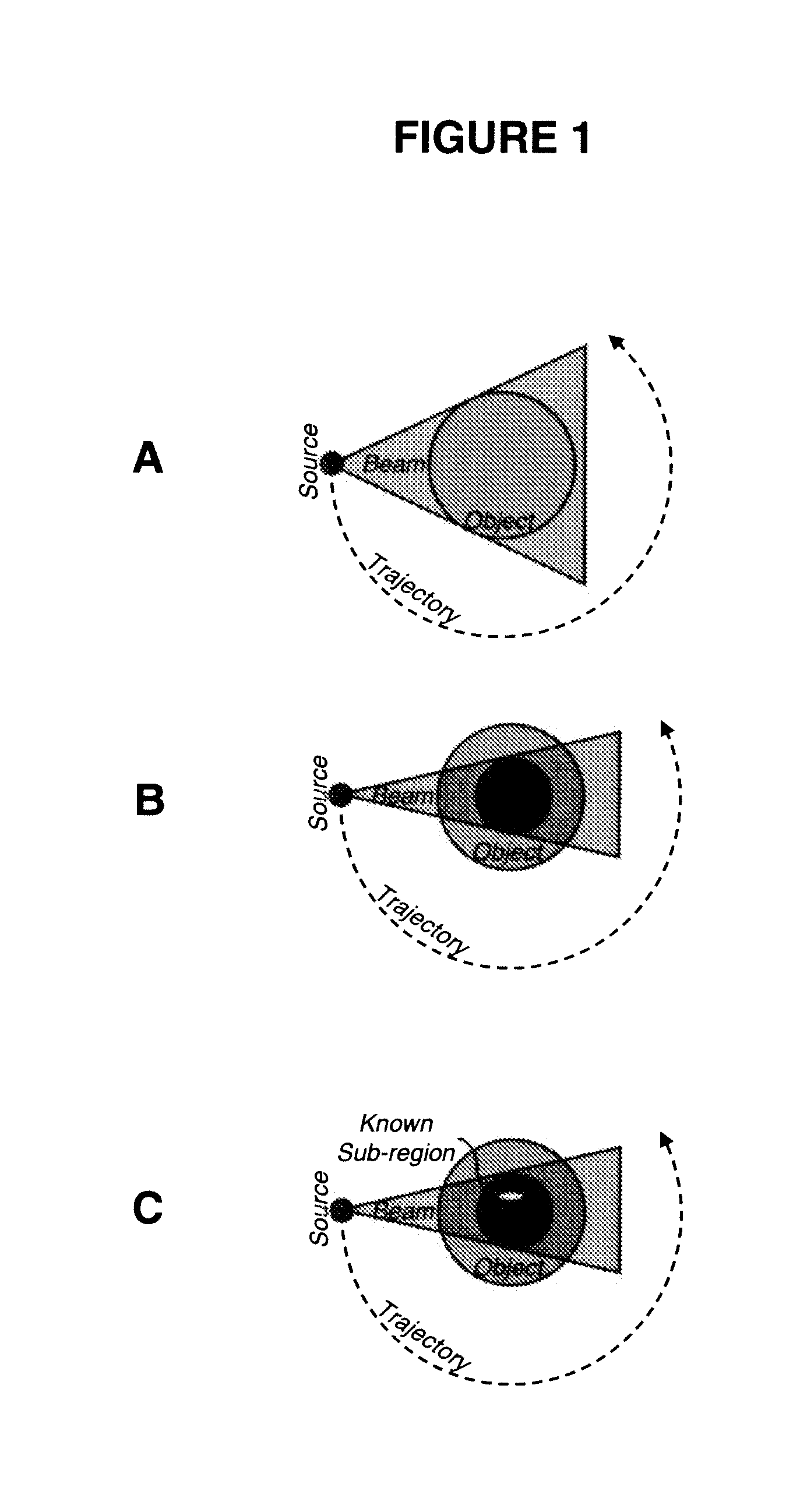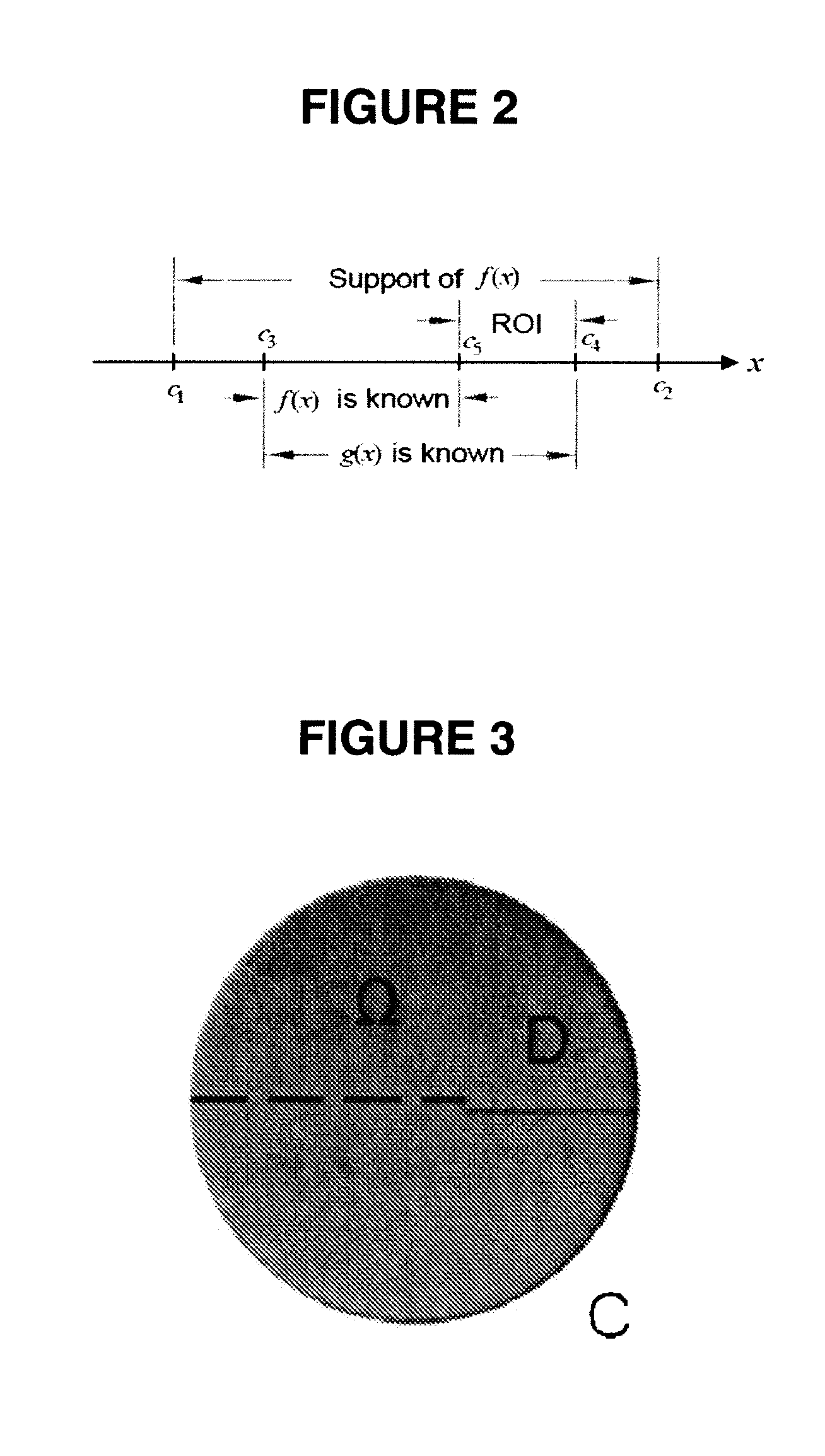Interior Tomography and Instant Tomography by Reconstruction from Truncated Limited-Angle Projection Data
a limited-angle projection and reconstruction technology, applied in the field of computed tomography, to achieve the effect of less radiation dose, higher spatial contrast and temporal resolution, and faithful resolution of features
- Summary
- Abstract
- Description
- Claims
- Application Information
AI Technical Summary
Benefits of technology
Problems solved by technology
Method used
Image
Examples
Embodiment Construction
[0033]Section I. Interior Romography With Prior Knowledge
[0034]Interior tomography becomes possible if one knows the object function ƒ(x) in a sub-region. The algorithms use the following mathematical techniques. The first is a formula proved by Gel'fand-Graev (see Gelfand, I. M. and M. I. Graev, Crofton Function And Inversion Formulas In Real Integral Geometry. Functional Analysis And Its Applications, 1991. 25(1): p. 1-5) which was later rediscovered by Pack-Noo-Clackdoyle (see Pack, J. D., F. Noo, and R. Clackdoyle, Cone-beam reconstruction using the backprojection of locally filtered projections. IEEE Transactions on Medical Imaging, 2005. 24(1): p. 70-85).
TheoremI-(Gel’fand-Graev1991)ThefiltereddataPV∫02π∂∂qDf(y(q),θ(s,x,γ))|q=sγsinγ
can be expressed as a Hilbert transform.
[0035]In the 1D setting, the Hilbert transform can be written as
g(y)=1πPV∫c1c2f(x)xy-x=(HLf)(y),(3.1I-1)
if ƒ(x) is supported on [c1, c2]. Note that the PV integral here becomes an ordinary integral if y ∉ [c1,...
PUM
 Login to View More
Login to View More Abstract
Description
Claims
Application Information
 Login to View More
Login to View More - R&D
- Intellectual Property
- Life Sciences
- Materials
- Tech Scout
- Unparalleled Data Quality
- Higher Quality Content
- 60% Fewer Hallucinations
Browse by: Latest US Patents, China's latest patents, Technical Efficacy Thesaurus, Application Domain, Technology Topic, Popular Technical Reports.
© 2025 PatSnap. All rights reserved.Legal|Privacy policy|Modern Slavery Act Transparency Statement|Sitemap|About US| Contact US: help@patsnap.com



